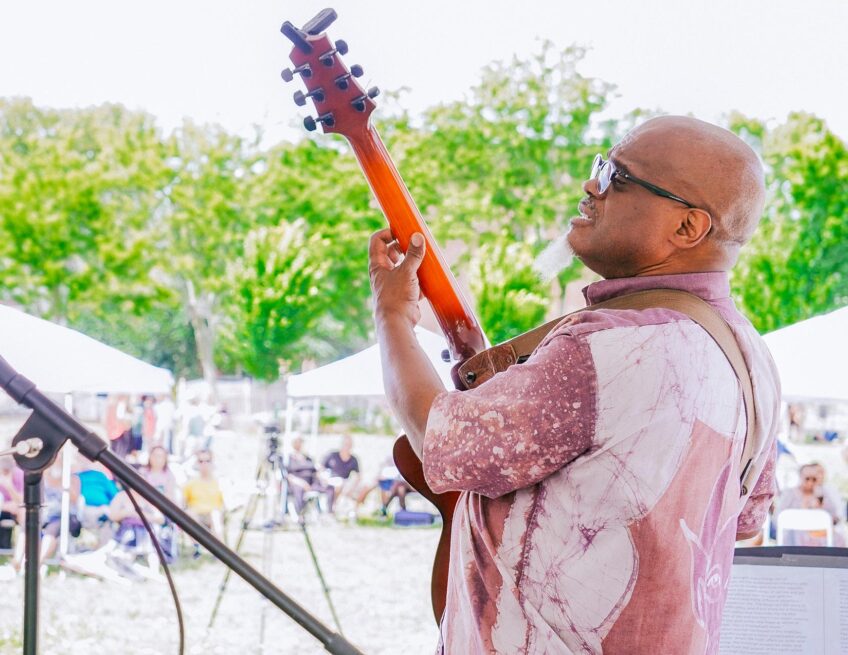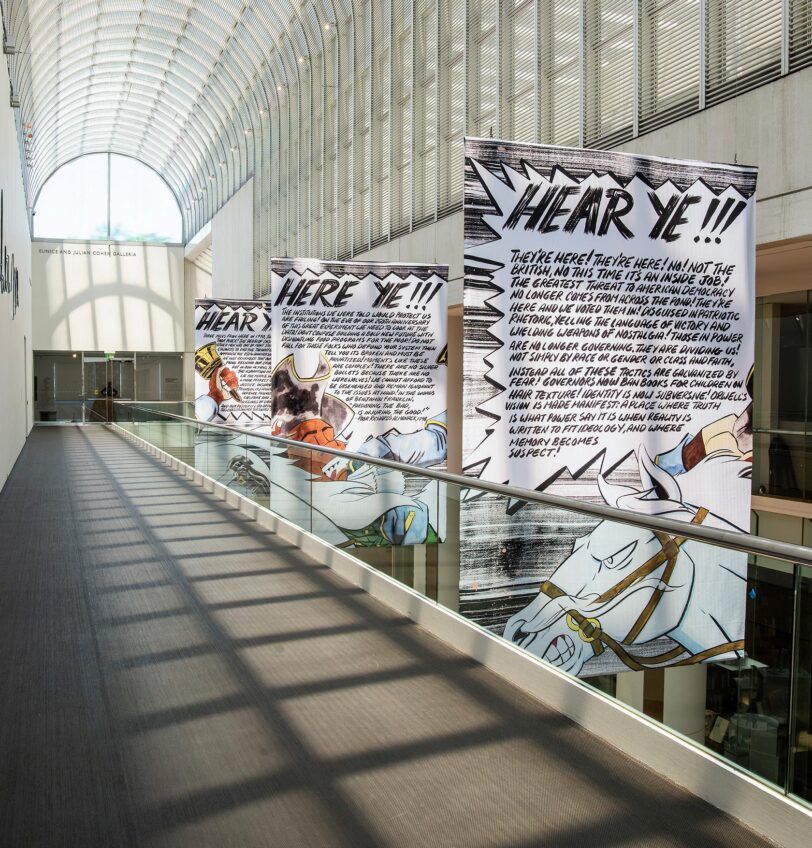University of Kansas displays character actor Gunn’s career memorabilia
LAWRENCE, Kan. — He portrayed a Harlem crime boss in “Shaft,” a legendary civil rights leader in “Ragtime” and a mystical envoy in “The NeverEnding Story.”
He earned an Emmy nomination for his work as an African chief in TV’s “Roots.”
He even joined the cast of the sitcom “Good Times.”
Moses Gunn played a lot of roles. And consequently, he accumulated a lot of stuff.
The University of Kansas department of theater and film recently acquired a collection of memorabilia from the 30-year acting career of the late Gunn, an alumnus of the university. The material was bequeathed by his widow, Gwen Gunn.
“I donated his collection to the university because it was a place he had always admired and because I thought it would receive more tender care than at the Schomberg (Center) or the New York Library at Lincoln Center, both of [which] are overwhelmed with the lives of actors,” Gwen Gunn says.
The performer originally came to Lawrence in 1959 as a graduate student after earning a degree at Tennessee State University, where he won a speech contest that led to a scholarship at KU.
“He got involved in the civil rights politics of the time and didn’t graduate in the ’60s, but was able to come back and finish later (in 1989) with the help of Bill Kuhlke, who was by then head of the theater department and helped devise a program for him,” Gwen Gunn recalls.
The decision to offer the collection to KU was fostered through her relationship with Kevin Willmott, an associate professor of theater and film at the university who had been invited to her house to view the material. The numerous items had been stored in the attic since Moses’ death. When Gwen had announced she was moving, Willmott helped coordinate the donation.
“I was a huge Moses Gunn fan as a kid, growing up seeing him in blaxploitation movies like ‘Shaft,’ and on ‘Good Times,’ all that stuff,” Willmott recalls. “What really struck me was his whole body of work: theater, film, TV. He had such an amazing, well-rounded career. As an African American, there weren’t many of us doing things at the time he was doing it. He was really one of the pioneers in the ’70s to break out and get dignified, positive roles.”
As a thank you for his efforts, Gwen gave Willmott the watch her husband wore in “Shaft.”
“That’s probably my prize possession now,” Willmott says.
Currently, a portion of the Gunn items are on display in the lobby of Murphy Hall.
“We get comments all the time because part of the collection is in the lobby. We’ll have somebody come by and say, ‘Oh, that’s THAT actor,”’ says John Staniunas, chair of the theater and film department.
With the collection still being catalogued, Staniunas hopes to have a more dedicated exhibit ready in February during Black History Month, possibly at the Spencer Museum of Art.
“We’re not sure where the display is going to go, if we’ll take it down or if we’ll offer it to other schools,” he says. “We’re eventually going to try to find a place to house it so people who are interested in Moses’ career can come and study the work.”
KU received more than 20 boxes of material at the beginning of the year. The items include posters, photographs, artwork, masks and various honors, such as his Emmy and Tony Award nomination plaques.
Signed photos by people ranging from Clint Eastwood to Lady Bird Johnson are among the spoils.
One of the most distinctive objects is a bronze bust of Gunn that Warner Bros. had made during production on “The NeverEnding Story.”
“It’s so nice to have a replica of Moses’ face,” says Staniunas, who admits one of his earliest recollections of Gunn was his guest appearances on TV’s “Little House on the Prairie.”
“Just looking at all his awards keys to the city, image awards. Those kinds of things are really special. Also just seeing all of the people he knew and worked with in his career like Christopher Walken. The list is endless.”
Gunn was born in 1929 in St. Louis, the eldest of seven children.
His mother died when he was 12, and he left home to ride the railroad. He eventually returned home to St. Louis, where he was taken in by his English and diction teacher.
After a tour in the Army, Gunn began his college career, which put him on the acting path for good.
His onstage charisma was bolstered by his distinctive voice, which Staniunas describes as “a cross between James Earl Jones and Paul Winfield something very smooth and rich, and yet gentle.”
He co-founded the Negro Ensemble Company, which led to his 1962 Broadway debut in Jean Genet’s “The Blacks.” His film debut was in 1964’s “Nothing But a Man.”
Future cinematic roles included “Rollerball,” “The Great White Hope” and “Firestarter.” His last feature film was Eastwood’s “Heartbreak Ridge” in 1986.
In 1993, he also received an Emmy nomination for writing an episode of “Homicide: Life on the Street.”
“I suppose I most associate Moses with the role of Othello in the summer of 1970, for which he got incredibly glowing reviews at the Stratford Shakespeare Theater in Connecticut,” says Gwen, who was married to him for nearly 30 years. “That was also the year our son was born. He attended the opening at 3 weeks of age, and was appropriately quiet.”
Moses Gunn died of complications from asthma at his home in Guilford, Conn., in December 1993.
“He’s one of the guys who really broke the doors down,” Willmott adds.
“He had an amazing theater career, which people don’t know as much about. But in terms of film, he’s one of the great character actors. That was untapped ground where he was getting roles that would have often gone to other kinds of character actors not an African-American. It was because he had that great accent and a real presence. He really made a niche for himself, then that opened those doors up to other people like him.”
(The Lawrence, Kan., Journal-World)






